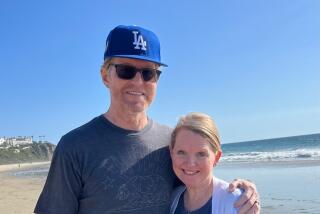USOC Pulls Rug on Track
In a first step that could ultimately lead to the loss of certification for the U.S. governing body for track and field, the U.S. Olympic Committee has imposed financial and other sanctions because of USA Track & Field’s refusal to turn over files relating to a U.S. sprinter who tested positive for a banned steroid in 1999 but won gold at the 2000 Sydney Summer Olympics.
The USOC has handed down a three-part series of sanctions, including the suspension of about $3 million that flows annually from the USOC to USATF. But the USOC emphasized that the steps are aimed at USATF and its administrators and not at U.S. athletes as they prepare for the Athens Summer Games, which begin Aug. 13.
For the USOC to consider such action against one of its own federations is highly unusual, especially a high-profile sport such as track and field at the onset of an Olympic year.
Bill Martin, the USOC’s acting president, said in a Dec. 19 letter to USATF Chief Executive Craig Masback and President Bill Roe that the USOC’s policy-making executive committee, “based on the handling of this matter by both of you ... questions your appreciation and understanding of the damage your inaction continues to cause USATF, the USOC and the entire U.S. Olympic movement.”
Asked to respond, Roe declined. Masback could not be reached for comment.
The impasse has strained U.S. relations with the International Olympic Committee as well as other national Olympic committees and the World Anti-Doping Agency.
At stake now are the gold medals won at Sydney by the athlete who tested positive, Jerome Young, and five other Americans who ran in either the preliminaries or the final round of the 1,600-meter relay, among them Michael Johnson. The IOC has launched a “disciplinary” commission for the matter, which is on the agenda at the next IOC meeting in February in Athens. Young has said he never “committed a doping offense.” He could not be reached Friday for comment.
The most significant of the sanctions--the first in a lengthy build-up to the USOC’s ultimate weapon, decertification of USATF--involves an annual cash grant the USOC provides to the USATF, as it does to dozens of other national sports federations. The USOC provided $2.8 million in 2003. USATF’s annual budget runs to about $15 million.
Separately, the USOC provides direct funding to individual track and field athletes, as it does to athletes in a variety of Olympic sports. In 2003, it gave a total of $945,000 to track and field competitors.
The non-financial sanctions are largely symbolic. The USOC said no credentials will be issued to the Athens Games for “USATF headquarters personnel and officers, including but not limited to [Masback and Roe].” And it cut off any “access that may have already been granted” to USATF headquarters staff or USATF officers “for the Athens Games.”
The sanctions were announced “effective immediately” in the Dec. 19 letter. In practice, however, the USOC gave USATF additional time in hopes records and materials would be forthcoming. The appropriate documents have not been produced.
Roe said, meantime, that discussions remain ongoing between USOC and USATF staff about the practical imposition of the financial sanction. He said USATF had requested $3.2 million for 2004.
The Young matter has tested patience on all sides. It had long been known in Olympic circles that a U.S. athlete had tested positive before the Sydney Games but was cleared to compete. Yet the details remained closely guarded by U.S. track and field officials.
The Times on Aug. 27 identified the athlete as Young, the world’s current 400-meter champion. He tested positive for nandrolone on June 26, 1999, at the U.S. outdoor national championships. The USOC in September confirmed Young’s identity to the IOC.
USATF maintains it is bound by an arbitration ruling issued last year that backed its position on confidentiality in the Young case and a dozen others. Officials with entities such as the USOC and the World Anti-Doping Agency say the arbitration ruling is no longer binding in Young’s case because the identity of the athlete is no longer secret.
For a male athlete, the legal level for nandrolone is two nanograms per milliliter (two parts per billion.)
A review of documents related to the case indicates that only one sample from the USATF championships on June 26, 1999 came back positive for nandrolone, at levels at least 30 times greater than the legal limit, perhaps as high as 50 times greater. A definitive reading has not surfaced.
In the spring of 2000, a USATF hearing board decided that Young had committed a doping violation. If confirmed, a violation becomes a “doping offense.” Typically, a nandrolone offense draws a two-year ban ; that would have left Young ineligible for the Sydney Games.
However, in July 2000, just days before the Olympic trials, a divided USATF appeals board reversed the finding of the violation and cleared Young to compete.
The hearing and appeal were conducted in secret.
More to Read
Go beyond the scoreboard
Get the latest on L.A.'s teams in the daily Sports Report newsletter.
You may occasionally receive promotional content from the Los Angeles Times.




